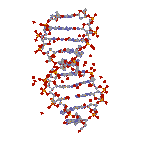美國FDA分析方法驗證指南中英文對照(二)
上一篇 / 下一篇 2009-01-05 10:44:15/ 個人分類:GMP/GLP
III. TYPES OF ANALYTICAL PROCEDURES
A. Regulatory Analytical Procedure
A regulatory analytical procedure is the analytical procedure used to evaluate a defined characteristic of the drug substance or drug product. The analytical procedures in the U.S. Pharmacopeia/National Formulary (USP/NF) are those legally recognized under section 501(b) of the Food, Drug, and Cosmetic Act (the Act) as the regulatory analytical procedures for compendial items. For purposes of determining compliance with the Act, the regulatory analytical procedure is used.
III 分析方法的類型
A. 法定分析方法
法定分析方法是被用來評估原料藥或制劑的特定性質的。USP/NF中的分析方法是法定的用于藥典項目檢測的分析方法。為了確認符合法規,需使用法定分析方法。
B. Alternative Analytical Procedure
An alternative analytical procedure is an analytical procedure proposed by the applicant for use instead of the regulatory analytical procedure. A validated alternative analytical procedure should be submitted only if it is shown to perform. equal to or better than the regulatory analytical procedure.
B. 替代分析方法
替代分析方法是申請者提出用于代替法定分析方法的分析方法。只有當一替代分析方法相當于或優于法定分析方法時,才可以應用驗證過的替代分析方法。
If an alternative analytical procedure is submitted, the applicant should provide a rationale for its inclusion and identify its use (e.g., release, stability testing), validation data, and comparative data to the regulatory analytical procedure.
如果提交了替代分析方法,申請者還應當提供其理由,并標明其用途(如,放行,穩定性實驗),驗證資料及其與法定分析方法的對比資料。
C. Stability-Indicating Assay
A stability-indicating assay is a validated quantitative analytical procedure that can detect the changes with time in the pertinent properties of the drug substance and drug product.
C. 穩定性指示分析
穩定性指示分析是能檢測出原料藥或制劑的某些性質隨著時間的延長而出現的變化的定量分析方法。
A stability-indicating assay accurately measures the active ingredients, without interference from degradation products, process impurities, excipients, or other potential impurities。
穩定性指示分析能不受降解產物,工藝雜質,賦形劑或其它潛在雜質的影響而準確測定其中的活性成分。
If an applicant submits a non-stability-indicating analytical procedure for release testing, then an analytical procedure capable of qualitatively and quantitatively monitoring the impurities, including degradation products, should complement it. Assay analytical procedures for stability studies should be stability-indicating, unless scientifically justified.
如果申請者遞交了用于放行檢測的非穩定性指示分析方法,則應當要有能定性和定量地監測雜質,包括降解產物,的分析方法對其進行補充。穩定性試驗中所用的含量分析方法應當要有穩定性指示能力,除非有科學的理由能證明其合理性。
IV. REFERENCE STANDARDS
A. Types of Standards
A reference standard (i.e., primary standard) may be obtained from the USP/NF or other official sources (e.g., CBER, 21 CFR 610.20). If there are questions on whether a source of a standard would be considered by FDA to be an official source, applicants should contact the appropriate chemistry review staff. When there is no official source, a reference standard should be of the highest possible purity and be fully characterized.
IV 標準品
A.標準品的類型
可以從USP/NF處或其它官方(比如說,CBER,21CFR 610.20)獲得標準品 (也就是一級對照品)。如果不能確定一標準品的來源是否會被FDA認為是官方來源,申請者應當要向適當的化學評審人員咨詢。如果沒有官方來源,則被用來作標準品的物質應當要有盡可能高的純度,并得到充分界定。
A working standard (i.e., in-house or secondary standard) is a standard that is qualified against and used instead of the reference standard.
工作對照品 (也就是內部標準品或二級標準品)是根據一級對照品標定的,并用來代替一級對照品的。
B. Certificate of Analysis
A certificate of analysis (COA) for reference standards from non-official sources should be submitted in the section of the application on analytical procedures and controls. For standards from official sources, the user should ensure the suitability of the reference standard. The standard should be stored correctly and used within the established use interval.
B.分析報告單
對于非官方標準品,在申請的分析方法和控制章節中應當要提供該標準品的分析報告單。對于從官方獲得的標準品,用戶應當要確保標準品的適用性。應當正確儲存標準品并在已確定的時間段內使用該標準品。
C. Characterization of a Reference Standard
Reference standards from USP/NF and other official sources do not require further characterization. A reference standard that is not obtained from an official source should be of the highest purity that can be obtained by reasonable effort, and it should be thoroughly characterized to ensure its identity, strength, quality, purity, and potency.
C.標準品的界定
從USP/NF及其它官方來源獲得的標準品是不需要進一步界定的。非官方對照品要有盡可能高的純度,并進行充分地界定以確保其結構,劑量,質量,純度和效力。
The qualitative and quantitative analytical procedures used to characterize a reference standard are expected to be different from, and more extensive than, those used to control the identity, strength, quality, purity, and potency of the drug substance or the drug product. Analytical procedures used to Draft — Not for Implementation characterize a reference standard should not rely solely on comparison testing to a previously designated reference standard.
用于界定標準品的定性和定量分析方法應當要不同于用于控制原料藥或制劑的結構,劑量,質量,純度和效力的分析方法,要比它們更深入。用于標準品界定的分析方法不應僅僅是和先前的指定標準品進行比較實驗。
Generally, this characterization information should include:
A brief description of the manufacture of the reference standard, if the manufacturing process differs from that of the drug substance. Any additional purification procedures used in the preparation of the reference standard should be described.
一般來說,界定資料應當要包括:
標準品的簡單工藝描述,如果其生產工藝是否于其相應的原料藥的話。應當要敘述制備標準品時所用的補充精制過程。
Legible reproductions of the relevant spectra, chromatograms, thin-layer chromatogram (TLC) photographs or reproductions, and other appropriate instrumental recordings. Data establishing purity. The data should be obtained by using appropriate tests, such as TLC, gas chromatography (GC), high-pressure liquid chromatography (HPLC), phase solubility analysis, appropriate thermometric analytical procedures, and others as necessary.
相關光譜圖,色譜圖,TLC照片及其它儀器輸出的清晰復印件。建立純度的資料。應當要應用適當的檢測方法來獲得這些資料,比如說TLC,GC,HPLC,相溶解分析,適當的熱分析方法及其它必要的分析方法。
Appropriate chemical attribute information, such as structural formula, empirical formula, and molecular weight. Information to substantiate the proof of structure should include appropriate analytical tests, such as elemental analysis, infrared spectrophotometry (IR), ultraviolet spectrophotometry (UV), nuclear magnetic resonance spectroscopy (NMR), and mass spectrometry (MS), as well as applicable functional group analysis. Detailed interpretation of the test data in support of the claimed structure should be provided.
適當的化學性質資料,比如結構式,經驗式和分子量等。結構確證資料應當要包括適當的分析測試,比如元素分析,IR,UV,NMR和MS,及適用的官能團分析。還應當要提供具體的結構解析資料。
A physical description of the material, including its color and physical form. Appropriate physical constants such as melting range, boiling range, refractive index, dissociation constants (pK values), and optical rotation. A detailed description of the analytical procedures used to characterize the reference standard.
物理性質的描述,包括顏色和物理形態。 適當的物理常數,比如說熔程,沸程,折射率,離解常數(pK值)和旋光度。用于界定標準品的分析程序的詳細敘述。
For biotechnological/biological product reference standards, the recommendations on characterization information above may apply and should be considered. However, additional and/or different tests would be important to assess physicochemical characteristics, structural characteristics, biological activity, and/or immunochemical activity.
至于生物技術/生物產品的標準品,應當要考慮上述建議,可能可以應用。然而,其它確定物理化學性質,結構特性,生物活性和/或免疫化學活性的補充檢測和/或其它檢測將是非常重要的。
Physicochemical determinations may include isoform, electrophoretic, and liquid chromatographic patterns, as well as spectroscopic profiles. Structural characterization may include a determination of amino acid sequence, amino acid composition, peptide map, and carbohydrate structure. Biological and/or immunochemical activity should be assessed using the same analytical procedures used to determine product potency.
物理化學性質包括異構體,電泳和液相色譜行為及光譜性質等。結構界定可能包括氨基酸序列,氨基酸組成,縮氨酸圖和碳水結構。確定生物和/或免疫化學活性的分析方法應當要和用來確定產品效力的分析方法一樣。
These can include animal-based, cell culture-based, biochemical, or ligand/receptor-binding assays. While these tests may be needed for complete characterization of certain reference standards, specific recommendations for validation of biological and immunochemical tests are not contained in this guidance document.
這些分析方法可以包括基于動物的,細胞培養的,生物化學的或配位體/接受體螯合的分析方法。如果這些檢測需用于某些標準品的界定,生物和免疫化學檢測的分析方法驗證方面的特殊建議并不在本指南的范圍之內。
V. METHODS VALIDATION FOR INDs
For an investigational new drug, sufficient information is required in each phase of an investigation to ensure proper identification, quality, purity, strength, and/or potency. The amount of information on analytical procedures and methods validation necessary will vary with the phase of the investigation (21 CFR 312.23(a)(7)).
V.IND中的分析方法驗證
對于IND而言,每個階段的研究都需要有足夠的資料以確保合適的認定,質量,純度,劑量和/或效力。所需的分析方法和方法驗證方面的資料會隨著研究的階段變化而變化(21 CFR 312.23(a)(7))。
For general guidance on analytical procedures and methods validation information to be submitted for phase 1 studies, sponsors should refer to the FDA guidance for industry on Content and Format of Investigational New Drug Applications (INDs) for Phase 1 Studies of Drugs, Including Well- Characterized, Therapeutic, Biotechnology-Derived Products (November 1995).
關于在第1階段研究所需提交的分析方法和方法驗證資料方面的指南,發起人可以參考FDA的指南:藥品(包括結構確定的,有療效的,生物技術產品)第1階段研究的IND申請的內容和格式(1995年11月)。
General guidance regarding analytical procedures and methods validation information to be submitted for phase 2 or phase 3 studies will be provided in the FDA guidance for industry INDs for Phase 2 and 3 Studies of Drugs, Including Specified Therapeutic Biotechnology-Derived Products, Chemistry, Manufacturing, and Controls Content and Format, when finalized (draft guidance published April 1999).
第2和第3階段研究所需提交的分析方法和方法驗證資料方面的指南,發起人將可以參考FDA的指南:藥品(包括結構確定的,有療效的,生物技術產品)第1階段研究的IND申請的CMC內容和格式(草案,1999年4月)。
All analytical procedures should be fully developed and validation completed when the NDA, ANDA, BLA, or PLA is submitted.
在遞交NDA,ANDA,BLA或PLA時,所有的分析方法都應當要開發出來,并得到驗證。
相關閱讀:
- 美國FDA分析方法驗證指南中英文對照(三) (Helen123, 2009-1-05)
- 美國FDA分析方法驗證指南中英文對照(四) (Helen123, 2009-1-05)
- 美國FDA分析方法驗證指南中英文對照(五) (Helen123, 2009-1-05)
- 美國FDA分析方法驗證指南中英文對照(六) (Helen123, 2009-1-05)


